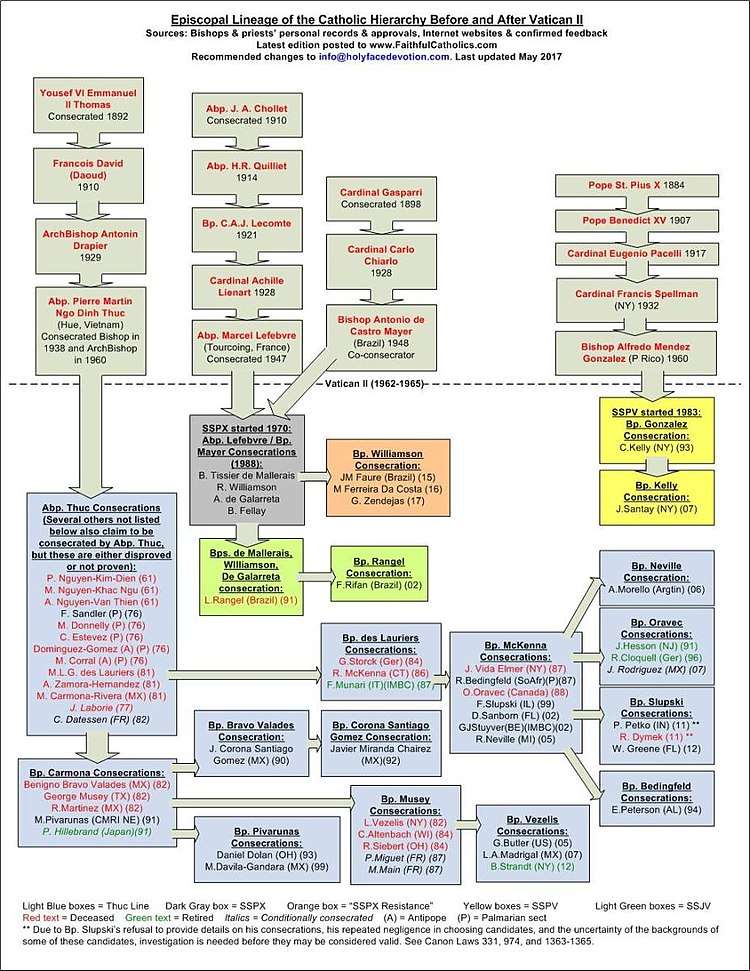Congregation of Mary Immaculate Queen
 | |
| Abbreviation | CMRI |
|---|---|
| Motto |
Servus Mariae Nunquam Peribit "The Slave of Mary Shall Never Perish" |
| Formation | 1967 |
| Type | Sedevacantist Catholic religious congregation |
| Headquarters | Spokane, Washington, United States |
| Mark Pivarunas | |
Key people |
Francis Schuckardt (founder) Denis Chicoine |
| Website | http://www.cmri.org |


The Congregation of Mary Immaculate Queen (CMRI) (Latin: Congregatio Mariae Reginae Immaculatae) is a Sedevacantist Traditionalist Catholic religious congregation that rejects the authority of the recent Popes, including Benedict XVI and Francis,[1] and is dedicated to promoting the message of Our Lady of Fátima and devotion to the Virgin Mary according to the teachings of St. Louis-Marie Grignion de Montfort (1673-1716), whom they regard as their spiritual founder. Over the years, the Congregation has also been known as the Fatima Crusaders and Oblates of Mary Immaculate Queen of the Universe.
History
Francis Schuckardt
The Congregation of Mary Immaculate Queen was formed in 1967 in Coeur d'Alene, Idaho by Francis Schuckardt,[1] with Denis Chicoine's assistance. In 1969, with the approval of Bishop Sylvester William Treinen, of the Diocese of Boise, Shuckardt formed the group into a religious congregation of sisters and brothers.
With the implementation of the reforms of the Second Vatican Council, Schuckhardt and his group came to the conclusion that Pope Paul VI was not a valid pope and therefore sought services from priests who shared his theological position. In the early 1970s Schuckhardt received holy orders as a priest and as a bishop from Bishop Daniel Q. Brown, an Old Catholic Church bishop.[1]
In the late 1970s CMRI acquired the old Jesuit scholasticate Mount Saint Michael in Spokane, Washington, making it their congregation's center.
In June 1984, Chicoine, with the backing of the majority of the congregation's clergy and laity, ousted Schuckardt after publicly accusing Schuckardt of being involved in homosexual relationships with underage associates, of irresponsible fiscal management, and of drug abuse.[1] Charges Schuckardt denied but he left the group anyway.[1]
Post-Schuckardt
In autumn of 1984, the priests sought out a bishop to ordain clergy for CMRI and found George Musey of Galveston, Texas, whose episcopal lineage can be traced to Pierre Martin Ngô Đình Thục. On April 23, 1985, three of the four remaining priests "formally and publicly" took an "Abjuration of Error and Profession of Faith ad cautelam" before Bishop Musey in case, through their previous actions, they had incurred any ecclesiastical censures. Bishop Musey then conditionally re-ordained them, although he publicly stated he personally had no doubts as to their validity of their earlier ordinations.
In 1986, CMRI held its first General Chapter establishing a formal set of Rules and Constitutions. In the same year, the Rule was approved by Bishop Robert F. McKenna, OP, whose episcopal lineage can also be traced to Archbishop Thục.
In 1989, Father Mark Pivarunas was elected Superior General of the Congregation. Father Pivarunas received episcopal consecration in 1991 by Bishop Moises Carmona, also of the Thục lineage.
Pivarunas currently serves as Superior General. Bishop Schuckardt (before his death) and his followers dispute Pivarunas's position as Superior General inasmuch as Bishop Schuckardt, the founder of the Congregation, had never officially resigned as Superior General and further claimed to have excommunicated Pivarunas, which would disqualify Pivarunas, according to traditional Catholic Church law, from holding that position.
In June 2007, 15 sisters living at Mount Saint Michael in Spokane were expelled from the Congregation because they had come to disagree with the Congregation's sedevacantism and to accept the authority of the post-Vatican II popes.[1] They joined the Roman Catholic Diocese of Spokane and formed the Sisters of Mary, Mother of the Church (SMMC) under the authority of the Spokane Bishop William Skylstad.[1]
Present day
The Congregation of Mary Immaculate Queen serves 29 churches and chapels in the United States, Canada, Australia, and New Zealand. They also operate the Mater Dei Seminary in Omaha, Nebraska, while the Sisters' motherhouse is located in Spokane, Washington (Mount Saint Michaels Mission). They have expanded into Canada, Australia, and New Zealand; Central and South America, with centers in Argentina, Brazil, and Mexico; and Europe, with Mass centers in England, France, Germany, Switzerland, Czech Republic, Russia, and Ukraine.
Superiors General
- Francis Schuckardt, (1967–1984)
- Denis Chicoine, (1984–1989)
- Mark Pivarunas, (1989–1991; 1995–present)
- Casimir M. Puskorius, (1991–1995)
References
Bibliography
- Griff Ruby, The Resurrection of the Roman Catholic 2002, p. 166.
- Michael W.Cuneo, The Smoke of Satan: Conservative and traditionale dissent in contemporary American Catholicism, 1999, p. 103, 104.
- Gary Waller, Walsingham and the English Imagination. 2011, p. 42.